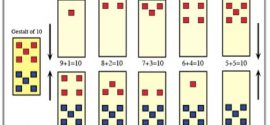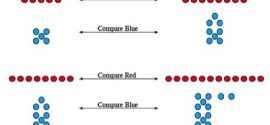Instruction

Shaywitz DyslexiaScreen
The federal First Step Act legislation defines “a dyslexia screening program means a screening program for dyslexia that is (A) evidence-based with proven psychometrics for validity; (B) efficient and low-cost; and (C) readily available.” And those characteristics precisely describe the Shaywitz DyslexiaScreen™.
The Shaywitz DyslexiaScreen™ is an efficient, reliable, and user-friendly universal screening measure for K-3 students who may be at risk for dyslexia. Dr. Sally Shaywitz created this unique evidence-based screening tool.
Read MoreWhat Dyslexic Students Look Like in the Classroom
Watch as successful dyslexics share their classroom experiences in this video.
Read More
Kids Can’t Wait: Strategies to Support Struggling Readers
The discovery of my own blind spot led me to wonder if other teachers were accidentally failing their students in similar ways.
Read More
Creating a Reading Culture
I’ll admit I used to wonder if my dyslexic students were doomed to always consider reading a chore.
Read MoreMaking Slow Reading More Fun
Tips on how educators can make slow reading more fun for students
Read MoreMath Introduction
Since the YCDC website began in 2007, we have received many requests about how best to help dyslexic students struggling with math.
Read More
Math: Counting & Comparing
A common response to students who are having counting problems is to simply have them do daily counting practice; however, students with counting and comparing difficulties also benefit from practice that utilizes patterns and relationships.
Read More
Math: Memory Challenges
Often an educational evaluation will describe a dyslexic student as having “low working memory.”
Read MoreMath: Naming Problems
Math-specific concepts seem to be particularly difficult to master. In addition to being abstract, these concepts contain terms that confound students with visual similarity or auditory similarity between homophones.
Read MoreMath: Processing Breakdowns
Students with slower processing speeds or executive-function problems are often no different from their peers in math proficiency in first and second grade; but as they confront multistep computations in upper elementary school tests, their scores tumble because they lack the skills necessary to produce organized, efficient output.
Read MoreEducators
-
Instruction
- Shaywitz DyslexiaScreen
- What Dyslexic Students Look Like in the Classroom
- Kids Can’t Wait: Strategies to Support Struggling Readers
- Creating a Reading Culture
- Making Slow Reading More Fun
- Math Introduction
- Math: Counting & Comparing
- Math: Memory Challenges
- Math: Naming Problems
- Math: Processing Breakdowns
-
School Culture
- Case Study – How Morningside Elementary School Helps Dyslexic Students Succeed
- Dyslexia and Civil Rights: Making Room on the Bus for All Children
- Building a word-rich life for Dyslexics
- How speech-to-text transformed a student's 5th grade year
- Rand Center: A Commitment to Accommodations
- Real World Learning
- The Privacy Dilemma
- A Charter School’s Journey into Assistive Technology
